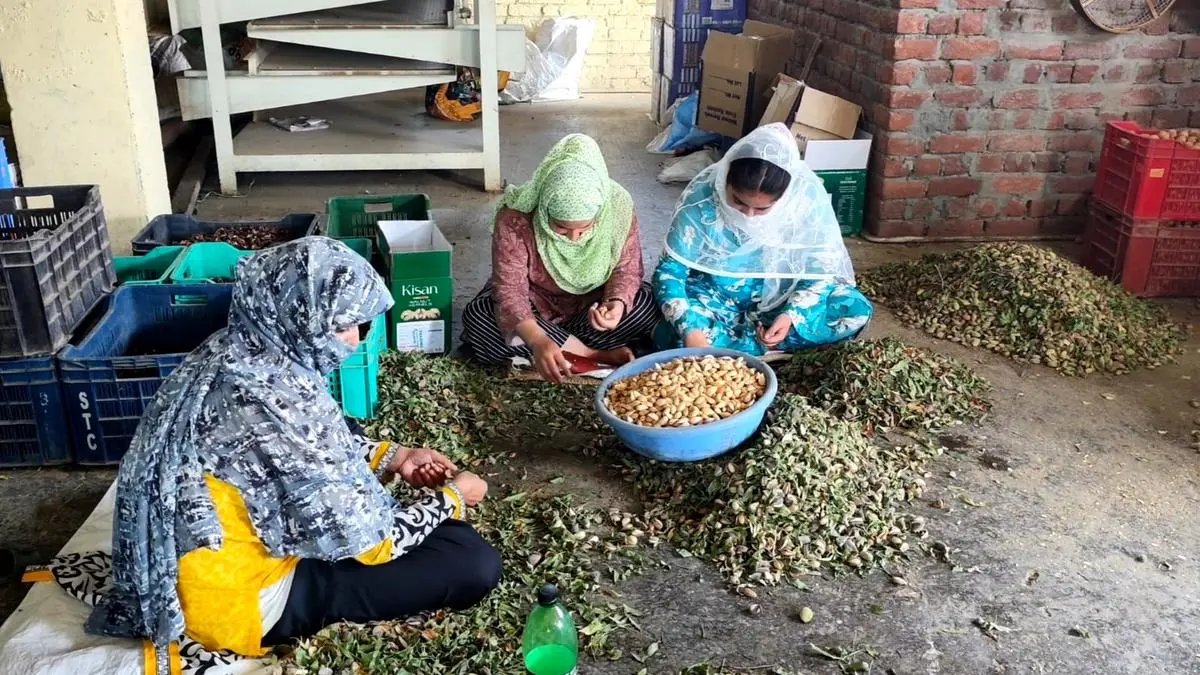Amidst bumper harvest, Kashmir’s almond industry faces shrinking farmland


Women sort and shell freshly harvested almonds in south Kashmir’s Pulwama district.
| Photo Credit:
Reshi Irshad
A bumper almond harvest has brought cheer to farmers in the Kashmir Valley this year. But the bounty does not eclipse concerns about shrinking farmland for the struggling farmers.
Farmers say conversion of orchards into residential and commercial spaces, and shift to other cash crops are threatening the long-term viability of almond cultivation in the region.
Despite favourable yields this season, they warn that without policy intervention and land-use regulation, the industry could face further decline in the coming years.
“This year, we recorded one of the best almond crops in recent years. However, the shrinking farmland and increasing construction on orchard land are serious concerns,” said Altaf Ahmad, an almond cultivator from Pulwama.
He said if this continues, they may not be able to sustain such yields in the future.
“In the absence of any effective regulations, almonds trees are being felled indiscriminately,” Ahmad added.
Shrinking land
Official data reveals a sharp decline in almond cultivation in Kashmir over the years. In 2006–07, almond orchards covered 16,374 hectares, but by 2019–20, the area had shrunk to 4,177 hectares. During the same period, almond production dropped from 15,183 tonnes to 9,898 tonnes, highlighting the growing challenges faced by the sector. Jammu and Kashmir accounts for over 90 per cent of India’s total almond production.
“Declining prices have forced farmers to shift to more remunerative crops like apples,” said Abdul Majeed, a farmer from Budgam.
He said that over the last decade, farmers across the Valley axed thousands of almond trees either to replace them with apple trees, or to make way for construction.
Another major challenge faced by almond growers in the region is the absence of a centralised market or mandi for dry fruits.
Farmers say the lack of organised infrastructure forces them to rely on middlemen and sell their produce at low prices in scattered local markets.
“Without a proper mandi or market, we have no option but to sell our almonds to middlemen for a song,” said Majeed.
Demand for high-density varieties
Amid shrinking farmland, almond growers are calling for the introduction of high-density varieties to boost productivity.
“The trees are planted much closer — 1.5 to 3 meters apart—compared to traditional varieties, which require 6 to 7 meters,” said a group of almond farmers from Budgam.
Director Horticulture Vikas Anand told businessline that the department plans to roll it out high-density almond plantation soon.
“This year the department is developing its own orchard,” the director added.
Published on August 6, 2025



